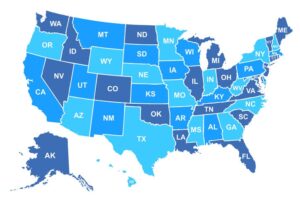Why aren’t alternative payment models working?
Out of more than 50 alternative payment models (APM) that CMS has implemented only six have shown statistically significant cost savings and only four of these met the requirements to be expanded in duration and scope. That is not my opinion, CMS itself states this. We all want higher quality at lower cost; so the question is, why aren’t APMs delivering what was promised?
A Health Affairs Forefront piece by Patel, Jain and Mate (2024) argue that improvement science can help to identify three key failures of the current APM. These failures include:
Insufficient data on population-level health and risks that lead to erroneous assumptions about cost-saving strategies;Misaligned or insufficient incentives that discourage providers from making favorable cost-saving clinical decisions; Infrastructural inertia whereby delivery systems cannot alter behaviors or internal dynamics, leading to persistent low-value care.
Solution to insufficient data: exogenous trigger events
The suggestions the authors make are sensible, but would further complicate these programs. For instance, risk adjustment occurs based on patient characteristics and social determinants of health collected before the start of an episode; the authors argue that risk adjustment could take into account clinical or social needs changes during an episode. Also, episode lengths are typically fixed; the authors argue that allowing for episode lengths to be modified in a way that would account for certain trigger events–such as including housing eviction, sudden unemployment, and natural disasters–could be useful.
The key–as the authors note–is that these changing conditions must be exogenous. If patients become more severely ill due to poor clinician care during the episode, clearly this should not be risk adjusted. The authors argument to incorporate exogenous factors (e.g., unemployment, housing eviction) into risk adjustment is sensible, but it’s not clear how many exogenous factors could truly be identified. Additionally, loss of employment may make people switch insurers in which case an episode may terminate if the new payer does not have episode data from the previous payer.
Solution to misaligned incentives: incentivize holistic care
The authors provide clear examples that more holistic and integrated care can produce improved outcomes and reduce cost. However, this isolated cases do not mean that it always will. The authors argue that providers should be rewarded for “remote patient monitoring, assembling care teams to manage data workflows, and creating evidence-driven equity plans.” These, however, are just different process measures to evaluate and do not actually incentivize improved patient outcomes or reduced cost (which are the twin ultimate goals). The authors also argue for incentivizing integrated practice units (IPUs). However, CMS has already had a number of integrated care initiatives such as accountable care organizations (e.g., Medicare Shared Savings Program) and the Multi-payer Advanced Primary Care Practice Demonstration. The latter is based on the patient-centered medical home model but showed little cost savings or quality improvements.
Institutional inertia solutions: Use plan-do-study-act (PDSA) cycle
The author’s proposal for quality improvement to happen through the plan-do-study-act (PDSA) is a good one in theory. The authors also argue for more reimbursement for information sharing activities. In fact, I would believe many provider health systems are already doing a lot of PDSA and some information sharing as well. However, having CMS requiring provider to enact a PDSA activities, likely would not change behavior and would just result in a documentation exercise, imposing additional cost on providers. While PDSA is very useful at the provider level, I am a bit skeptical that payer incentivization of PDSA would make a major difference in practice.
In short, I agree that the authors have identified some short-comings of the current alternative payment models approach. Many of the suggestions they make are very reasonable at the provider level, but likely would not be impactful if these were simply payer mandates. Still, I applaud the author’s efforts to have creative thinking on how to improve APMs.


